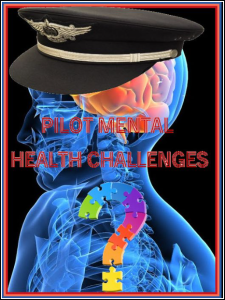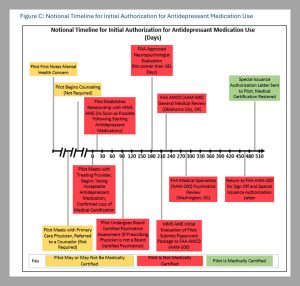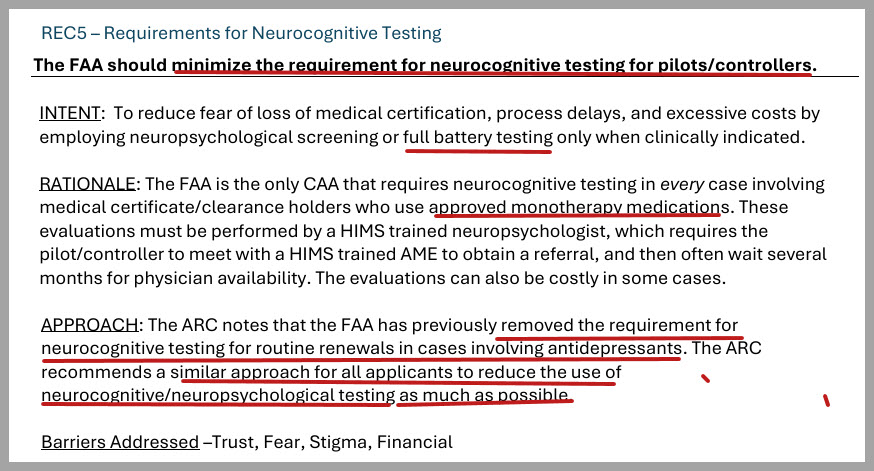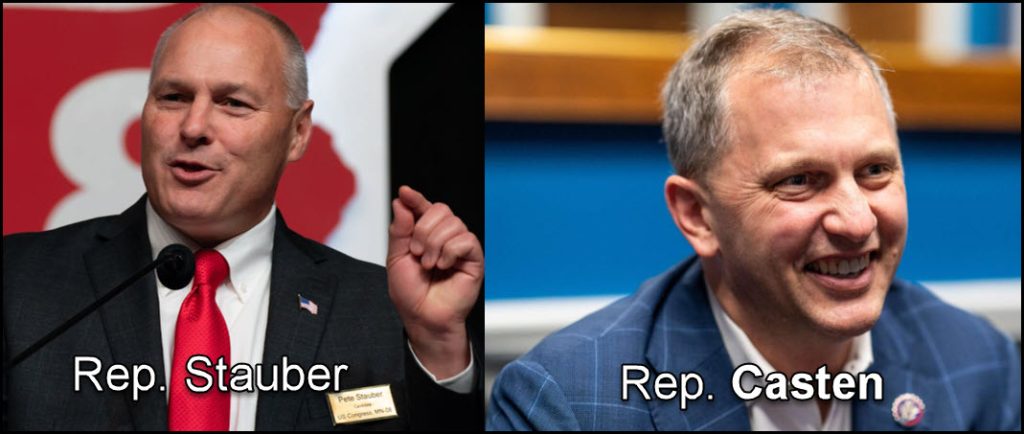House to FAA : fix Pilot Mental Health rules NOW- not as fast as they think
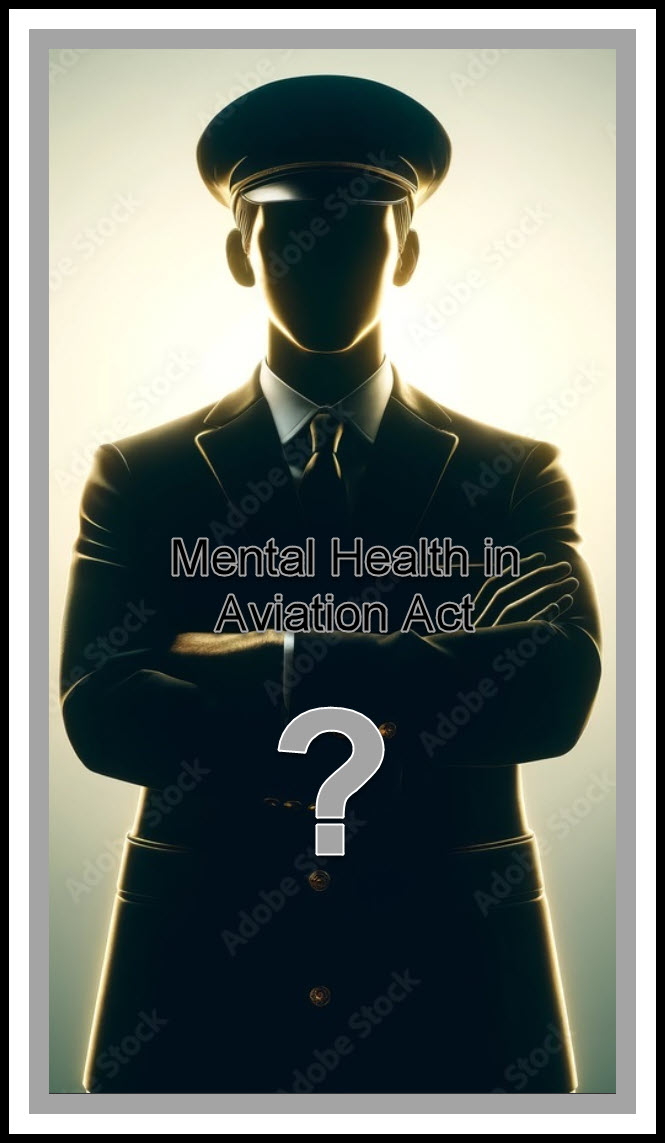
The House of Representatives passed (see below) a rare (in 2025) BIPARTISAN BILL that (if enacted) requires the FAA to radically revise its mental health policy (PMH) for pilots and air traffic controllers (hereinafter “pilots” and similar terms).
-
WHY did the House Act?
-
What was the basis of this legislative policy for this complex issue?
-
What must the FAA do when the new PMH statute is effective?
WHY?
All in aviation have been befuddled by the repeated Pilot Mental Health incidents and accidents. On the one hand, aviation safety professionals are adversely inclined toward risk and cockpit crew members with unpredictable, unstable behavior qualifies as a concern On the other hand, the current medical policy prohibits pilots, who admit that they are having problems, from flying. Essentially a decision that ends their careers.
The contentious nature of the debate is well documented:
- Alaska Jump Seat Pilot Incident Suggests That Pilot Peer Groups For Mental Health Should Be Mandatory To Detect This Insidious Safety Risk. 10/2023
- With Contentious Debate, A 25 Year Professional’s Pilot Mental Health Insights 03/2024
- A Second Arc On Pilot Mental Health Emphasizes Disclosure Without Revocation: What Does That Mean? 04/2024
- ALPA Offers A Great Tool In The Pilot Mental Health Struggle 05/2024
During the course of these events, new information and well-articulated arguments have altered the debate, creating some promising points about a new PMH might actually be possible.
WHAT WAS THE BASIS FOR THIS CHANGE?
In December 2023, the FAA recognized the need to reform its current policies and established the Mental Health and Aviation Medical Clearances Aviation Rulemaking Committee (ARC) to identify barriers to mental healthcare for aviators and present recommendations to the FAA to address these challenges. Four months later, April 1, 2024. The ARC released its final report on April 1, 2024, offering a sweeping set of recommendations aimed at improving how mental health is addressed in aviation safety and medical certification. (AI summary)
- Barriers to Disclosure
- Pilots and air traffic controllers often avoid reporting mental health concerns due to fear of losing certification, stigma, and mistrust of the FAA’s processes.
- The ARC recommends CREATING CONFIDENTIAL PATHWAYS for disclosure and increasing transparency in medical decision-making.
- Handling Mental Health Diagnoses
- The FAA should adopt a more nuanced approach to mental health diagnoses, recognizing that not all conditions impair safety.
- Recommendations include CLEARER GUIDANCE ON ACCEPTABLE TREATMENTS AND CONDITIONS, AND FASTER REVIEW TIMELINES FOR MEDICAL DECISIONS.
- Interim Safety Measures
- To bridge the gap between disclosure and FAA clearance decisions, the ARC suggests temporary safety protocols, such as supervised duty or limited operational roles.
- International Best Practices
- The ARC reviewed global aviation authorities and recommended adopting best practices from countries with more progressive mental health policies, including peer support programs and proactive education.
- Education and Culture Change
- A major thrust of the report is cultural transformation: reducing stigma, promoting mental wellness, and encouraging voluntary self-disclosure.
- The FAA and industry stakeholders are urged to IMPLEMENT MENTAL HEALTH EDUCATION PROGRAMS and normalize seeking help.
- Trust and Transparency
- The ARC emphasizes rebuilding trust between aviators and the FAA through clearer communication, consistent policy enforcement, and stakeholder engagement.
What must the FAA do after enactment?
Mental Health In Aviation Act (HR 2591) mandates
SEC. 5. Implementation of aviation rulemaking committee
Not later than 2 years after the date of enactment of this Act, the Administrator shall implement, to the GREATEST EXTENT PRACTICABLE, the recommendations of the Mental Health and Aviation Medical Clearances Aviation Rulemaking Committee which were submitted to the Administrator on April 1, 2024.
Perhaps the author of this timeline is unaware that the ARC Report is 164 pages long with 24 Recommendations. It also may not have been intuitive that taking the words of the ARC and converting them into regulations is NOT a CUT and PASTE exercise.
Here are a few examples of how complicated it is to take language used to DESCRIBE into words that PRESCRIBE.
1.The table below defines a timeline with specific language and precise dates for A RECOVERY PROGRAM. To convert this recommendation into a Federal Aviation Regulation involves drafting with terms that are understandable, actionable and exact.
That task must be done carefully and the writer, post writing for an FAA official must be able to change the perspective to the private sector professionals who administer the airline’s PMH program. The interpretations tend to vary more than one would expect with a few simple words and sentences. The best proof of this observation is that the FAR with the largest number of requests for interpretation was the old Flight & Duty time regulations.
- Neurocognitive Testing
The words that are central to this lesser testing are “full battery testing, approved monotherapy medications, antidepressants, similar approach, reduce testing “as much as possible.” Old drugs become no longer appropriate and new pharmacological developments occur; how does a rule retain currency over time? “Full testing” and “reduce testing as much as possible” are capable of a number of interpretations; more precision takes time.
- The Administrative Procedure Act applies even with a Congressional mandate of a new rule and it was written to assure that the public may comment on a NPRM, especially one that implements a new scheme. Here is a brief precis of what APA compliance typically involves with an FAA proposal:
- The rulemaking process often begins with internal research, stakeholder engagement, or external petitions.
- Drafting the Proposed Rule includes its legal basis, purpose and scope, regulatory text, and Cost-benefit analysis
- Internally, an NPRM is circulated among the “client” (here Flight Standards’ Aerospace Medicine), the policy office and here in particular, Congressional Affairs)
- The document is then reviewed by the DOT staff (usually offices corresponding to the coordination within the FAA). It is common that the draft will be subject to multiple reviews the DOT- up and down, back and forth!
- Finally the well-vetted text is then sent to the OMB Office of Information and regulatory Affairs (OIRA). A new crew of evidently omniscient savants now search for faults in these areas of the proposed NPR
- Raises novel legal or policy issues
- Affects other agencies or the federal budget
- Cost-Benefit Analysis
- Regulatory Impact Analysis (RIA)
- Considered reasonable alternatives
- Quantified costs and benefits
- Justified the regulatory approach
- NEPA, especially environmental justice, federalism
- It ensures that rules are consistent with presidential priorities and broader regulatory policy.
- Publication in the Federal Register
- Summary of the proposed rule
- Full text or description
- Instructions for submitting comments
- Deadline for public input (typically 30–60 days)
- Public Comment Period
- Individuals, organizations, and other stakeholders may submit written comments.
- Agencies may also hold public hearings or request additional data.
- Review and Analysis
- The agency reviews all comments and may:
- Revise the proposed rule
- Reopen the comment period
- Withdraw the proposal
- Final Rule Issuance
- After considering feedback, the agency publishes the Final Rule in the Federal Register.
- It includes:
- Responses to significant comments
- Explanation of changes
- Effective date (usually at least 30 days after publication)
- Judicial Review
- Final rules may be challenged in court under APA standards, such as whether the rule is “arbitrary and capricious” or exceeds statutory authority.
An NPRM that does not meet all of these substantive and procedural requirements, likely it will be reversed. Back to step 1
While the ARC and the Mental Health In Aviation Act should facilitate the transition to a final rule, the two year deadline is highly optimistic. The same Congress that want to reform FAA’s PMH, also imposes so many required prior reviews which delay the delivery of a new more sophisticated standard for pilots and controllers.
US House passes pilot mental health bill
Rawpixel.com / Shutterstock.com
The US House of Representatives has passed the MENTAL HEALTH IN AVIATION ACT (HR 2591), a bipartisan measure that would enable PILOTS AND AIR TRAFFIC CONTROLLERS to seek mental health care without the career-threatening risk that comes with disclosure under current aviation regulations.
Lawmakers approved the bill on September 8, 2025, by voice vote, sending it to the Senate for consideration.
For decades, pilots have avoided talking about mental health concerns with aviation medical examiners. The risk was clear: a disclosure could mean being grounded, lengthy delays in receiving medical clearance, or losing the ability to keep flying altogether. The legislation aims to change that by reducing mental health stigmas and rewriting the rules that have discouraged pilots from seeking help in the past.
The act directs the Federal Aviation Administration (FAA) to revise its regulations surrounding mental health WITHIN TWO YEARS. The agency will be expected to replace outdated disclosure requirements and update treatment policies. It also amends provisions in the 2024 FAA reauthorization law to ensure the agency consults with medical professionals and labor groups as it develops new policy.
The bill requires the FAA to review its special issuance medical process every year. That review must look at whether more medications can be approved, whether aviation medical examiners are receiving enough training, whether they should be given more authority to make decisions, and whether the overall process can be improved.
Congress TIED MONEY TO THE REFORMS AS WELL. From 2026 to 2028, about $13.7 million a year would go toward adding and training medical examiners, boosting FAA oversight, and clearing certification backlogs. Another $1.5 million per year would fund a campaign to reduce mental health stigmas, make resources easier to find, and encourage pilots and controllers to come forward with the issues they face.
The legislation also requires the FAA to carry out RECOMMENDATIONS from its Mental Health and Aviation Medical Clearances Aviation Rulemaking Committee, which delivered a detailed report in 2024. The committee identified stigma, confusion, and a lack of transparency as major barriers to care. If the FAA chooses not to adopt any of the recommendations, it must explain its reasoning to Congress.
Industry groups welcomed the House vote. The National Business Aviation Association, which served on the rulemaking committee and has long supported mental health initiatives, said the bill is an important step forward.
“It is vital that we foster an environment where pilots can seek help without fear of professional repercussions,” said NBAA President and CEO Ed Bolen, adding that the measure improves both safety and pilot wellbeing.
The bill was introduced by Rep. Pete Stauber, Republican of Minnesota, and Rep. Sean Casten, Democrat of Illinois, with support from Transportation and Infrastructure Committee leaders Tracey Mann, Republican of Kansas, and Rick Larsen, Democrat of Washington. It advanced out of committee in June with broad bipartisan support.
Calls for reform have grown as pilots and controllers point to stigma, confusing rules, and long waits for medical decisions. The House bill builds on the rulemaking committee’s work and aims to fix those problems with clearer policies, stronger training, and ongoing education.
With House approval secured, the measure now heads to the Senate. If it becomes law, the FAA will be on the clock to revise its regulations, expand medical examiner capacity, and launch the educational campaign. For pilots and controllers, the promise is straightforward: it should be easier to ask for help, get timely answers, and return to duty when they are ready to do so.
